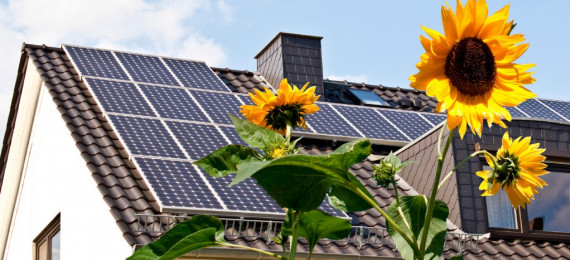These resources are from an archived version of our website. Want to see what we’ve been up to lately? Check out our new website.
Category: guidebook
Archives - Clarum Homes » Archive by category 'guidebook' (Page 2)
High Performance in a Home...What Does It Mean? At present, there is no universal definition of a "high-performing home" in the construction industry. However, there is some consensus in the way that it is used. According to the New Home Stakeholders Group (Colorado), high performance means setting a higher bar for “comfort, durability, indoor air quality, and lower energy use.” Meanwhile, the Appraisal Institute (a global association of real estate appraisers) says the term suggests energy efficiency, sustainability, and the use of environmentally friendly products. Our definition...
Read More
Utilities Add Up By itself, $200 may not sound like much. But if that’s what you’re spending on utilities each month, it’s more than it seems. Utilities add up, and the yearly and lifetime costs are much larger than one might think. At Clarum, our passive and passive-inspired homes lower your utility bills in a big way, dramatically decreasing the lifetime costs of owning a home. Utility Costs are on the Rise In 2010, American families spent between $30 a month to over $400 on electricity, gas and water, with the average family paying around $200. In California, the bill averaged $83 on electricity...
Read More
What Makes a House Sustainable?
Posted by Clarum Homes on August 27, 2012 | Categories: custom homes, energy efficiency, guidebook | 2 Comments
The definition of sustainable “Sustainable” is an important and widely-used word, now more than ever. On the other hand, it’s also widely misused. So what does “sustainable” really mean when it comes to home-building? Sustainable literally means “able to continue without an end in sight.” Any finite resource which can be used up, or any practice that can’t continue indefinitely, isn’t sustainable. Unlike the word “green,” which covers anything that’s intended to support the health of the environment, “sustainable” is objective and very definable. What, then, is a sustainable...
Read More
Passive Homes and the Environment
Posted by Clarum Homes on August 13, 2012 | Categories: energy efficiency, guidebook, high performance homes | No comment
The cost of energy is rising rapidly – and not just in dollars. Our environment is paying the price as well: non-renewable energy consumption, carbon emissions, pollution, and inefficiency. All of these pressures make passive design a very timely and relevant notion. The Clarum approach to building passive and passive-inspired homes supports the health of our environment by consuming less energy, conserving non-renewable resources, and reducing our ecological footprint. Passive Homes Consume Less Passive homes represent today’s highest energy standard and can slash the energy consumption...
Read More
The Comfort of a Passive Home
Posted by Clarum Homes on July 31, 2012 | Categories: custom homes, guidebook, passive home | 1 Comment
Comfort can be subjective, but undefinable? Not at all. Plenty of research is available on the factors of human comfort: conditions which, when present, universally put us at ease and add to our well being. At Clarum, comfort is crucial. It's another reason we love passive design. Passive homes achieve comfort without even trying, because the objective conditions of human comfort are simply a natural side-effect of passive building strategy. General Comfort Factors Comfort starts with fresh air, abundant natural daylight, good sound quality and protection from noise.When these are present,...
Read More
Do you have indoor air pollution? What is that chemical smell? Why am I sneezing, feeling dizzy, or coughing in my brand new home or office? Why is my child’s asthma getting worse? It could be the new carpet, the cabinetry, the paint, or the formaldehyde in the plywood. Nobody wants to have these experiences when they move into their new home. Unfortunately, most construction today is rife with chemicals and toxins that pollute our indoor air quality and negatively impact our short- and long-term health. Immediate effects of exposure to indoor pollutants include irritation of the eyes,...
Read More












